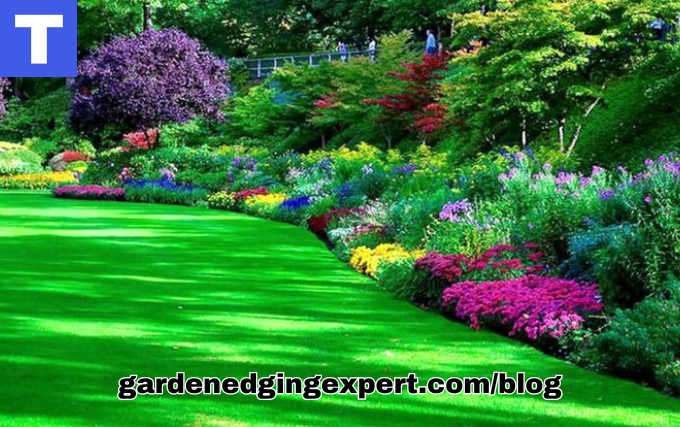Creating a well-defined edge between your lawn, flower beds, and pathways is essential for a tidy and aesthetically pleasing garden. Garden edging not only improves the overall look of your garden but also helps in maintaining its structure. This guide will walk you through everything you need to know about garden edging, from choosing the right materials to installation and maintenance tips.
Why Garden Edging is Important
Enhances Aesthetic Appeal
Garden edging creates clean, crisp lines that define different areas of your garden, making it look well-organized and professionally designed. It adds a finished look that enhances the overall appeal of your outdoor space.
Prevents Grass Encroachment
One of the practical benefits of garden edging is that it keeps grass from invading your flower beds. This means less weeding and maintenance for you, allowing your plants to thrive without competition from your lawn.
Improves Garden Structure
Edging helps to contain soil, mulch, and gravel, preventing them from spilling into other areas. This maintains the integrity of your garden design and reduces the need for constant cleanup.
Types of Garden Edging Materials
Choosing the right material for your garden edging depends on your garden style, budget, and personal preference. Here are some popular options:
Metal Edging
Metal edging, such as steel or aluminum, is durable and provides a sleek, modern look. It’s easy to install and can be shaped to create curves or straight lines. Metal edging is also resistant to weather and corrosion, ensuring long-lasting performance.
Plastic Edging
Plastic edging is an affordable and flexible option, making it ideal for creating curved designs. It is lightweight and easy to install, but it may not be as durable as other materials.
Stone and Brick Edging
Stone and brick edging add a classic, timeless look to your garden. These materials are highly durable and can withstand harsh weather conditions. They are perfect for creating a rustic or traditional garden style.
Wood Edging
Wood edging offers a natural and rustic appearance that blends well with most garden designs. Treated wood is recommended for longevity, as it resists rot and insect damage. However, wood may require more maintenance compared to other materials.
How to Install Garden Edging
Installing garden edging is a straightforward process that can be done with a few basic tools. Follow these steps for a successful installation:
Step 1: Plan Your Edging
Decide where you want to place the edging and mark the boundaries with stakes and string. Consider the shape and design you want to achieve, and ensure that it complements your garden layout.
Step 2: Prepare the Area
Remove any grass, weeds, or debris from the area where you will install the edging. Dig a trench along the marked line, ensuring it is deep enough to accommodate the edging material.
Step 3: Install the Edging
Place the edging material into the trench, making sure it is level and aligned correctly. For metal or plastic edging, secure it with stakes or spikes. For stone, brick, or wood edging, ensure the pieces fit snugly together.
Step 4: Backfill and Finish
Fill in the trench with soil, packing it firmly around the edging to hold it in place. Add mulch, gravel, or plants as desired to complete the look.
Maintenance Tips for Garden Edging
To keep your garden edging looking its best, follow these maintenance tips:
Regular Inspection
Periodically check your garden edging for any signs of damage or displacement. Repair or replace any broken or loose pieces to maintain the integrity of your garden borders.
Clean and Clear
Keep the edges clear of debris, grass clippings, and weeds. This not only enhances the appearance but also prevents potential damage to the edging material.
Replenish Mulch and Gravel
Over time, mulch and gravel can shift or decompose. Replenish these materials as needed to ensure your garden beds remain well-defined and tidy.
Conclusion
Garden edging is a simple yet effective way to enhance the beauty and functionality of your outdoor space. By choosing the right materials and following proper installation and maintenance practices, you can create stunning garden borders that stand the test of time. Whether you prefer the modern look of metal, the classic appeal of stone, or the natural charm of wood, there is a garden edging solution to suit every style and budget. Start transforming your garden today with the perfect edging!
